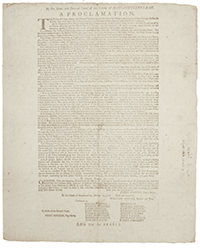Over the past two years we have had the great fortune to have Clarence Wolf’s reminiscences as a bookseller. He has a keen eye and wry style. This past year he self-published his widely appreciated Fifty Years a Bookseller: or, The Wolf at Your Door. Whether this is the first chapter of a new book is yet to be the seen. Add him in your novenas.
BEM
By Clarence Wolf
As I have stated earlier, the advent of the internet has had a profound effect on bookselling, as evidenced both in pricing and availability. Things that were once thought to be rare or scarce are now, in many cases, readily available on line. Many books, whose value was based on information, have now become superfluous. Standard reference works have been replaced by cell phones and computers. Booksellers’ reference libraries, once considered to be a large part of their retirement fund, are now of little value. Many once-prized bibliographies are now worth a fraction of their former values. Another byproduct of cyberspace is the diminution of brick-and-mortar bookshops. Perhaps even greater than the loss of bookshops is the virtual disappearance of book scouts.
Much like the fabled Dodo of days gone by, book scouts, the stalwart souls of bookselling have all but vanished from the landscape. Hardly a day or two would pass at our old shop on Irving Street without a visit from one of a number of our regular scouts. There were different types to be sure; some were really savvy bookmen, and others were simply gatherers of discarded junk. Some had regular jobs, and scouting was something they did to supplement their incomes; some were retirees, and a few were unemployable, and barely fit for polite society. One of the scouts who visited on a weekly basis that I remember was somewhat past middle age, a widower, and a recent transplant from California. He had some health issues, didn’t drive, and lived with his married daughter. Because of this he relied solely on public transportation, which made carrying shopping bags full of books difficult. I always felt sorry that he had to lug those heavy bags, which sometimes resulted in my buying books I wouldn’t normally have bought. He was stooped and a bit round-shouldered, giving him the appearance of a bookish Willy Loman. He would make his rounds first visiting William H. Allen, then our shop, plus several others. He was nice, but if you didn’t buy whatever he thought you should, he took it very personally. Another of our regulars was heavily tattooed, and I think at one time he had some sort of affiliation with the circus. His myriad tattoos included an additional set of eyes. These sat directly above his real eyes, which at times made our conversations somewhat disconcerting, because I never knew which eyes to look at. He was nice, but dealing with him was always a bit uncomfortable. Neither of my parents would deal with him, so it always became my responsibility to examine whatever books he was offering. In those days the people who sported tattoos tended to be bikers, ex-convicts, or old salts, unlike today when it has become fashionable for young ladies to adorn themselves with ink. One man, clearly the creepiest of the lot, always asked if we had any books bound in human skin. Many of his offerings were equally unsavory and weird. On occasion we would get something really good from one of these scouts, but more often than not their offerings tended to be shelf stock and not rare books.
One of our regular scouts was a frequent customer as well. His name was Mr. Dubhorn. I’ve long since forgotten his first name, which was something like Festus, or Delbert. And if it wasn’t it should have been. At any rate, Mr. Dubhorn was an extremely odd man, who, despite his oddness assembled a very good collection of books about Pennsylvania, New Jersey, Delaware, and Virginia. He knew his books, and he insisted on buying only the best histories of any particular region. In addition, he was insistent on getting books in their original bindings, and in pristine condition. In this regard he was resolute.
Mr. Dubhorn was, I believe, a caretaker who lived somewhere in New Jersey. He would come to Irving Street on his days off, bring books he wanted to sell, and also look for books he wished to buy for his collection. We had inherited him from George MacManus, who had apparently sold him books for years prior to my parents’ take over. Each of his purchases would be accompanied by a long (usually painfully so) explanation as to why the particular history he just purchased, or wanted to purchase, was the best history of that particular town or region.
One day, several weeks after his previous visit, Mr. Dubhorn phoned and told me that he had mistakenly bought a book that duplicated something that he already had in his collection. The book in question was an absolutely perfect copy of Gordon’s Gazetteer of Pennsylvania. It was published in 1832, and was in the original linen-backed boards, with a printed paper spine label. It was untrimmed, and its folding map had never been opened. When he asked if he could return it, I said there was no problem and that I would happily take it back.
What happened next ended my relationship with Mr. Dubhorn.
Not long after our phone conversation Mr. Dubhorn came to Irving Street. When he showed me the book he wished to return, it was not the pristine history I had sold him, it was notably shorter, and had been rebound in maroon library buckram. When I told him that this was not the book I had sold him, he was insistent that it was. He went on to explain that he had ALL of his books uniformly bound in maroon library buckram. I was incredulous. This man had been insistent on buying only the finest copies of books in their original bindings and then essentially destroying them by re-binding them in library buckram. I tried to explain that he had ruined his books, but he wasn’t having it. He left in a huff, but not before angry words were exchanged.
Mr. Dubhorn was never to be seen or heard from again.
There was one character that stands out as being the biggest flimflam man I ever dealt with. I don’t remember his name, although I think his first name might have been Ben. My guess is that he was my parent’s age, or perhaps a bit older. He would bring large quantities of books to the shop, a number of which were pretty good; certainly they were better than the standard fare most scouts would bring. I seem to recall that one of the best books he sold me was a rare pamphlet by either John Jay or Alexander Hamilton. I knew then that it was a very rare piece, and I can only begin to imagine what it would be worth today. He had an easy manner, but I sensed that he was somewhat of a hustler. Despite that, I bought a fair number of books from him that I did well with.
“Ben” became a regular visitor, bringing me books of all description on a near weekly basis. One day he showed up in a large truck that was overflowing with books. The books in question had come from the University of Pennsylvania Press. Somehow our friend had convinced the people at Penn that their prayers had been answered, and that he was the answer to those prayers. He told them that he would sell their overstock supply of titles that were no longer being offered for sale. This, he assured them would be accomplished very easily, and that he would only charge a modest commission for his services. Not to worry, he’d take care of everything.
Ben kept most of his promises to the Press, all except for the paying for the books part. Not long after all their books were sold Ben disappeared for a while, perhaps for a much needed vacation. I of course was completely unaware that he had absconded with the money, and that in essence had been selling stolen books.
After a couple or so months passed without seeing “Ben”, he stopped by the shop with another offering of books, and in addition, made an offer that was very enticing. Looking back through the lens of someone fifty plus years older, I am certain that I was selected as the recipient of this “once in a lifetime deal” because I was a wide-eyed innocent rube. Before the groundwork of the deal was revealed to me I had to swear that I would not divulge any of its details or whereabouts. I gave him my word that wild horses couldn’t drag the information out of me, and went on to tell him how honored I was to be the one he chose to partner with.
“Ben” told me that he had made a deal with Barnes and Noble, who had decided to divest themselves of their rare book department. In those days, in addition to selling new books and supplying text- books to schools and colleges, they sold rare books. The Barnes and Noble in question was located at 586 Fifth Avenue, near 18th Street in the Flatiron section of New York City.
My instructions were simple: I was to purchase two round trip tickets on the Metroliner, wear a suit and tie, and meet “Ben” at 7:30 in the morning at 30 th Street Station. I was so naïve that I never questioned why I should have to buy him a ticket, or more importantly, why a venerable bookselling firm, begun in 1873 would require the services of my “partner” to sell their books. Ignorance it is said is bliss, and I was overflowing with both. Like a lamb to its slaughter I boarded the train and headed for New York.
What happened next was embarrassing, surprising, and not the least bit scary.
After a short cab ride we arrived at Barnes and Noble, and soon found ourselves downstairs which was where the rare books were housed. Ben pointed out the books he wished to sell, and told me to select the ones that were of interest. I started pulling books and making stacks of them. I was completely oblivious to my surroundings when all of a sudden a strange man appeared and confronted me asking who I was and what the hell I was doing there.
At first I was speechless; somewhat in shock from the less than gracious welcome from the store’s manager. When I was able to gather my thoughts and compose myself I gave him my card, and explained that I was Ben’s guest, and that he was selling me the books that he had bought from Barnes and Noble. It didn’t take too long for him to see that I was a hapless mark who had been duped by this con-man. Next, two things happened: he threw Ben out of the store, and his attitude towards me changed dramatically. Fortunately he was familiar with the MacManus Company, and I believe had known George MacManus.
After my “partner” had departed, and after things calmed down, I was actually able to buy a number of books from Barnes and Noble’s rare book room. The only book that I remember buying was the very first copy of Moby Dick I ever bought. It wasn’t a great copy, but it was a great book. There were others, but I can’t recall a single title.
Ben was never to be seen again after the Barnes and Noble episode. It was a learning experience on many levels and to some extent a coming of age experience as well. It’s hard for me to believe that I was that gullible, but I was. It certainly made me more wary in the future.
If you would like to speak with the man himself, his offices are at George S. Mac Manus Co. at 12 Water Street, Bryn Mawr, Pennsylvania 19010. He can be reached by email at books@macmanus-rarebooks.com or by phone at 610-520-7273.

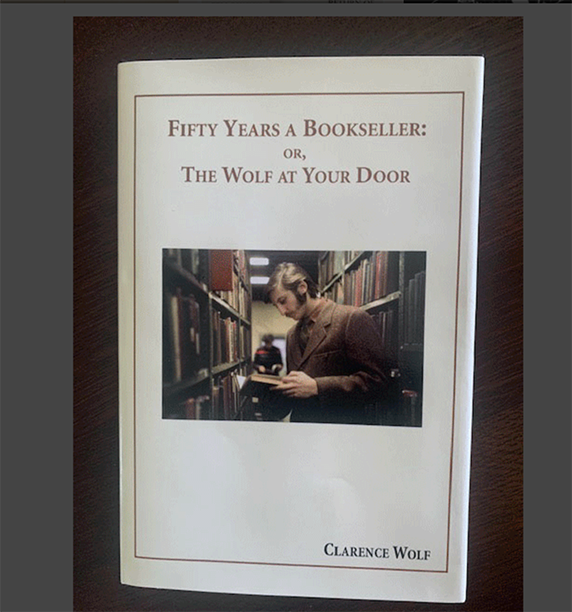
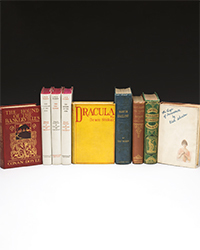
![<b>Heritage, Dec. 15:</b> John Donne. <i>Poems, By J. D. With Elegies on the Author's Death.</i> London: M[iles]. F[lesher]. for John Marriot, 1633. <b>Heritage, Dec. 15:</b> John Donne. <i>Poems, By J. D. With Elegies on the Author's Death.</i> London: M[iles]. F[lesher]. for John Marriot, 1633.](https://ae-files.s3.amazonaws.com/AdvertisementPhotos/8caddaea-4c1f-47a7-9455-62f53af36e3f.jpg)
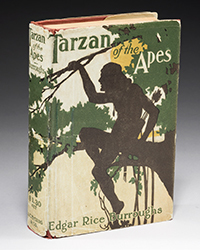
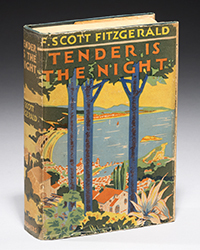
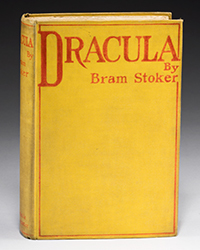
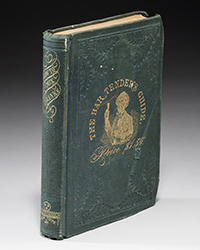

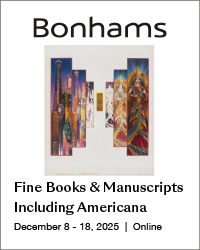

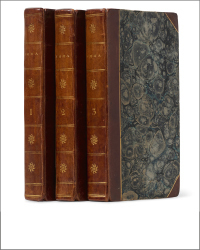
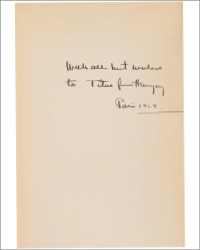
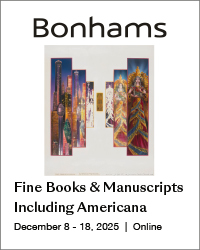
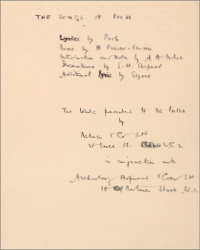

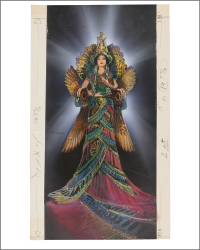
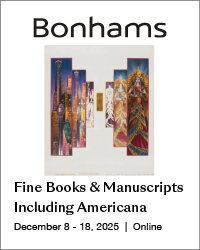
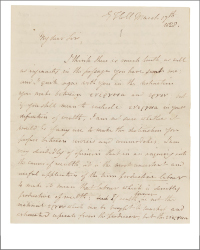
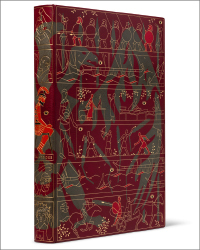
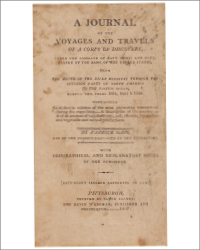
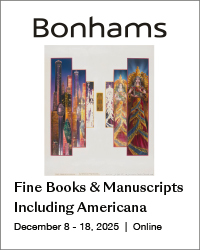
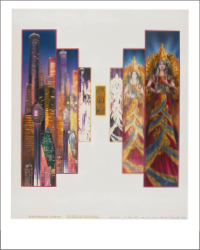
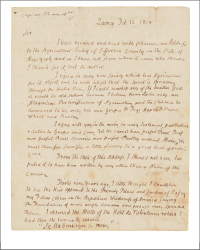

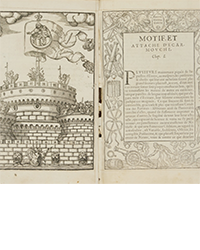
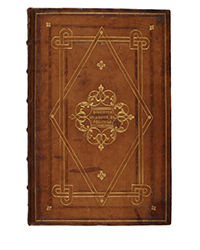
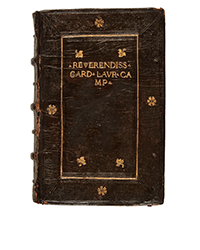
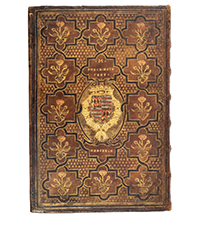
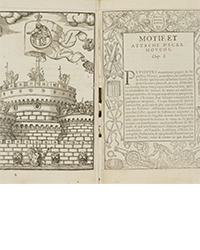
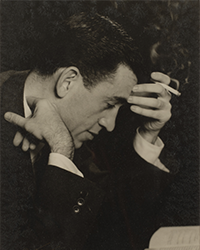
![<b>Sotheby’s, Dec. 16:</b> [Austen, Jane]. A handsome first edition of <i>Sense and Sensibility,</i> the author's first novel. $60,000 to $80,000. <b>Sotheby’s, Dec. 16:</b> [Austen, Jane]. A handsome first edition of <i>Sense and Sensibility,</i> the author's first novel. $60,000 to $80,000.](https://ae-files.s3.amazonaws.com/AdvertisementPhotos/9a74d9ff-42dd-46a1-8bb2-b636c4cec796.png)
